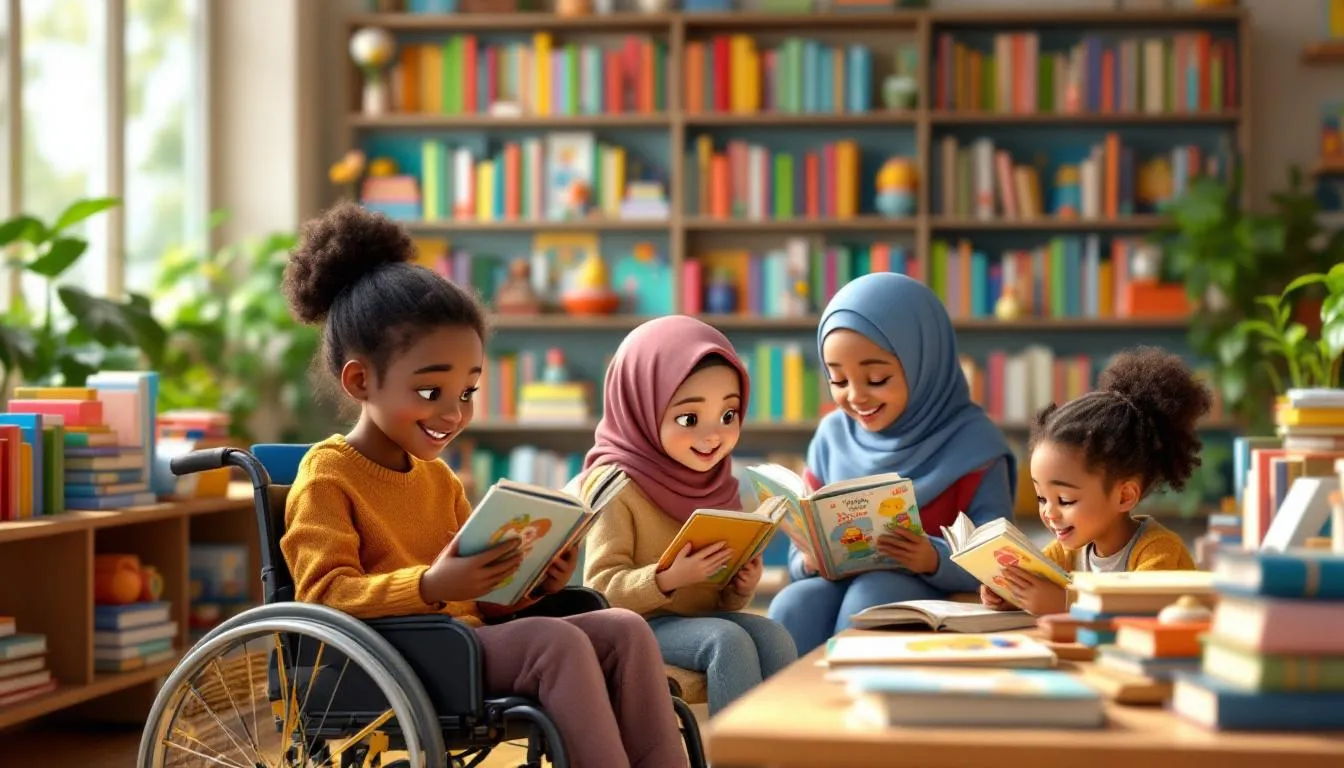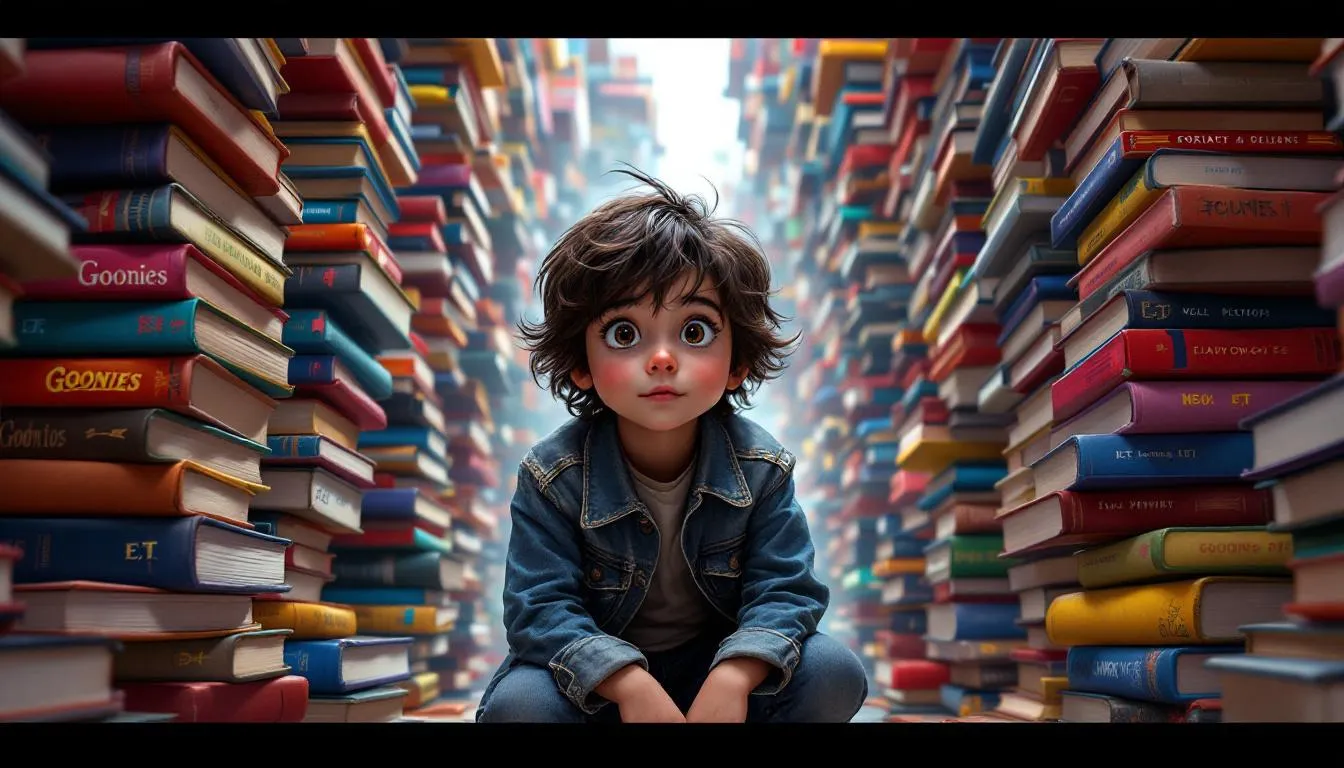Table of Contents
Quick Answer
Diverse representation in children’s literature showcases characters and narratives from a wide array of cultural, ethnic, and social backgrounds. This diversity is crucial as it helps children see themselves in stories, fostering self-esteem and identity development while nurturing empathy for others. Representation in children’s books is vital because it helps children understand and appreciate the rich tapestry of human experience, building a more inclusive world.
When kids encounter stories that reflect their own lives and those of others, they develop a deeper understanding of themselves and their surroundings.
What Impact Does Diversity in Books Have on Children?
Diversity in children’s literature profoundly impacts young readers, starting with its role in boosting self-esteem and identity. Imagine a child flipping through a book and seeing a character with the same curly hair, vibrant skin tone, or wheelchair. That moment of recognition can be incredibly powerful. It tells the child, “You matter. Your story matters.” Such representation provides a sense of belonging and affirmation, significantly enhancing self-perception and confidence.
I recall reading about a young girl who finally saw a character in a book wearing a hijab, just like her. Her parents shared how this simple representation sparked pride and increased her eagerness to participate in school activities. These small moments of recognition can have lasting effects, positively shaping a child’s identity.
Beyond personal identity, diverse books are essential tools for building empathy and understanding. When kids read about characters from different backgrounds, they learn to appreciate perspectives beyond their own. This exposure fosters empathy, acceptance, and the ability to connect with others who may not look, speak, or live like them. Studies have shown that children exposed to diverse literature are more likely to develop inclusive attitudes and friendships.
Research indicates that diverse representation in literature can lead to improved social skills and reduced prejudices among young readers. A study by the Cooperative Children’s Book Center found that children who read diverse stories demonstrated a greater understanding of social justice issues.
As families explore the world of children’s literature, it’s helpful to consider how preferences for representation are addressed, ensuring every child’s bookshelf is a window to the world.
How Can Families Address Differing Preferences for Representation?
In our family, discussing the types of stories we want to read is like planning a road trip. Everyone weighs in on the destinations, and sometimes we take unexpected detours that become the most memorable parts of the journey. Addressing differing preferences for representation in children’s literature requires open communication.
Open Communication Strategies
Start by having regular conversations about the books your kids are reading. Ask questions like, “What did you like about the main character?” or “Did you notice anything new about their world?” These questions can spark discussions about diversity and representation. It’s important to create a safe space where everyone feels comfortable sharing thoughts and preferences.
Navigating Disagreements
Disagreements are natural, and handling them with respect can teach valuable life skills. Encourage kids to express their likes and reasons while also listening to others’ viewpoints. You might find that your child has a deeper connection to a story because it mirrors their own life or challenges them to think in new ways.
Selecting Inclusive Books Together
Make book selection a family affair. Visit libraries or bookstores together, exploring sections dedicated to diverse stories. This can be a fun adventure, helping kids feel involved and excited about their book choices.
Resources for Finding Diverse Children’s Literature
Numerous resources are available to help families find inclusive books. Websites like “We Need Diverse Books” offer recommendations, and local librarians can be treasure troves of information. Don’t hesitate to reach out for suggestions tailored to your family’s interests.
Engaging Children in the Selection Process
Involve your children by letting them pick books that catch their eye, whether through cover art or a fascinating title. You might be surprised by their choices and the conversations that follow.
As you explore these strategies, you’ll likely discover new ways to enrich your family’s reading experiences, opening doors to stories that nurture empathy and understanding.
What Are Effective Strategies for Encouraging Diversity in Literature?
Supporting diverse voices in literature begins at home, and it’s easier than you might think. When we choose to support inclusive publishers and authors, we’re casting a vote for diversity with our wallets. Think of it as a treasure hunt in the vast world of books, where each discovery enriches our understanding of human experiences.
Consider making a conscious effort to purchase books from authors and publishers that champion diversity. This not only supports the creators but also signals to the publishing industry that there is a demand for diverse narratives. Some of my favorite publishers that consistently spotlight diverse voices include Lee & Low Books and Groundwood Books. They offer a rich selection of stories reflecting the world’s beautiful variety.
Beyond purchasing, advocating for diversity in schools and libraries is vital. Start by suggesting diverse titles to your child’s teacher or school librarian. Organize or participate in book fairs highlighting inclusive stories. Volunteering your time to diversity initiatives can also make a significant impact. Whether joining a committee at your local library or working with non-profits, each effort pushes towards a more inclusive literary landscape.
By taking these steps, we not only enrich our children’s reading experiences but also contribute to a broader cultural shift towards inclusivity. These actions set the stage for a world where every child sees themselves reflected in the stories they read and learns to embrace the stories of others.
Key Takeaways
- Diverse representation boosts children’s self-esteem by allowing them to see themselves in stories.
- Exposure to varied narratives fosters empathy, helping children understand different perspectives.
- Engage in open dialogues with your family about book choices to align preferences and celebrate diversity.
- Involve children in selecting books to encourage their interest in inclusive literature.
- Support diverse authors and publishers by choosing books that reflect the world’s diversity.
- Advocate for inclusive collections in your community’s schools and libraries.
By embracing diverse stories, we nurture a generation of understanding, compassionate, and confident individuals ready to change the world.







